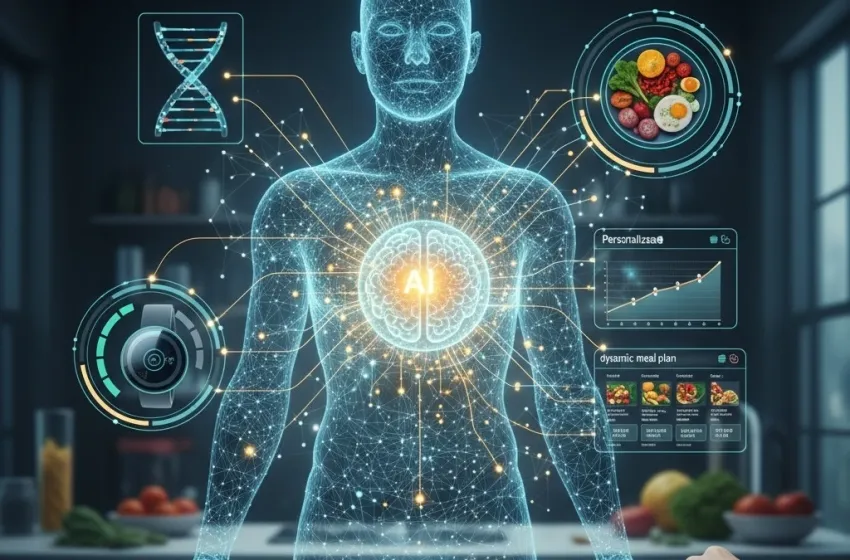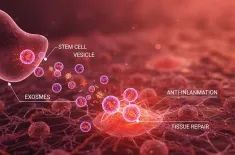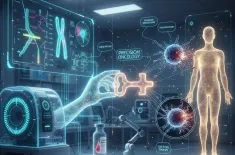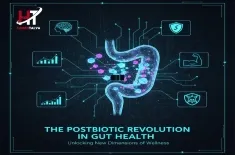Unlock your personalized diet with AI nutrition. Analyze real-time CGM, DNA, and lifestyle data for dynamic meal planning and optimal metabolic health.
The age of one-size-fits-all dietary advice is rapidly drawing to a close. For decades, nutritional science has operated on broad, population-level guidelines—eat less fat, consume more fiber, reduce sugar intake. While generally well-meaning, these recommendations often fail to account for the incredible biochemical uniqueness of every individual. This is where the revolution of AI nutrition steps in, transforming generic advice into highly specific, actionable, and dynamic dietary blueprints.
This paradigm shift, powered by the convergence of advanced data analytics and bio-sensing technology, is creating a new frontier in wellness: the personalized diet. This is not just about preference; it's about precision. By leveraging the power of Artificial Intelligence to process complex biological and lifestyle data, we can now create nutrition plans that are not only perfectly tailored to an individual's body but also adapt in real-time to their changing physiology and environment. The result is an unprecedented path toward optimizing metabolic health, preventing chronic disease, and achieving peak vitality.
The Core Components of AI-Driven Personalization
The complexity of human metabolism is vast, involving thousands of genetic variants, dynamic hormonal responses, and a constantly shifting gut microbiome. Analyzing this complexity requires a technological engine capable of handling colossal, multifaceted datasets—a job perfectly suited for AI. The foundation of a true personalized nutrition plan rests on integrating three primary, high-resolution data streams: DNA analysis, real-time biofeedback from devices like a continuous glucose monitor (CGM), and comprehensive lifestyle metrics.
Decoding Your Blueprint: DNA Analysis
Genetic information is the static blueprint of an individual's nutritional response. DNA analysis (nutrigenomics) provides foundational insights into how a person's body is predisposed to process different foods and nutrients.
- Nutrient Metabolism: AI algorithms can scan Single Nucleotide Polymorphisms (SNPs) to determine the efficiency of nutrient absorption and metabolism. For example, certain genes influence how efficiently an individual metabolizes caffeine, processes B vitamins (like the MTHFR gene and folate metabolism), or manages blood pressure in response to sodium intake.
- Food Sensitivities and Risks: Genetic markers can flag predispositions to conditions like lactose intolerance or celiac disease, or identify individuals with a higher risk of weight gain from certain macronutrient ratios (e.g., a diet high in saturated fat).
- Macronutrient Ratio Optimization: By understanding genetic variants related to fat, carbohydrate, and protein processing, AI can customize the ideal macro split for energy balance, weight management, and satiety—moving far beyond the standard percentages recommended for the general population.
Real-Time Biofeedback: The Continuous Glucose Monitor (CGM)
The most transformative piece of the AI nutrition puzzle is the integration of real-time metabolic feedback, primarily via the continuous glucose monitor (CGM). Traditionally used for diabetes management, the CGM offers a minute-by-minute window into how an individual's body reacts to *everything*—food, sleep, stress, and exercise.
- Identifying Glycemic Signatures: Two people can eat the exact same apple, yet their blood sugar responses can be dramatically different. This is known as inter-individual variability. AI uses machine learning to identify a person's unique "glycemic signature"—the magnitude and duration of their postprandial (after-meal) glucose spikes for thousands of different food combinations.
- Precision Timing: The CGM data allows AI to analyze the impact of meal timing and food sequencing. For instance, the AI might discover that eating protein and fiber before carbohydrates significantly blunts a person's glucose spike, leading to a specific, evidence-based recommendation to always start their breakfast with an egg or a handful of nuts.
- Activity Correlation: The system correlates glucose readings with physical activity data from wearables. AI might learn that a 15-minute walk immediately after lunch drastically reduces the post-meal glucose peak, leading to a behavioral recommendation that is just as important as the food advice.
Comprehensive Context: Lifestyle and Behavioral Data
The genetic code is static, and the CGM provides dynamic metabolic data, but the final, crucial layer is the lived context, or lifestyle data. This includes:
- Activity and Sleep: Data from smartwatches and fitness trackers on steps taken, calories burned, heart rate variability, and sleep quality (duration, cycles, interruptions). Poor sleep, for example, is a known trigger for insulin resistance and higher morning glucose readings.
- Dietary Intake: Information logged manually, via photo recognition apps, or through natural language processing (NLP) of food diaries, providing details on food types, portions, and meal compositions.
- Environmental Factors: Location, time of day, and even seasonal changes can influence nutritional needs and recommendations.
- Health Goals and Preferences: User-inputted goals (weight loss, muscle gain, energy optimization) and constraints (allergies, ethical preferences like veganism, culinary tastes).
How AI Analyzes Real-Time CGM, DNA, and Lifestyle Data
The magic of AI-driven personalized nutrition lies in the complex, iterative analysis of these disparate data sources. AI models—specifically, machine learning (ML) and deep learning (DL) algorithms—synthesize this vast, continuous stream of information to create dietary recommendations with surgical precision.
The Algorithm in Action: Data Synthesis and Prediction
Data Ingestion and Feature Engineering: The AI platform first ingests all available data:
- Genetic Data: Fixed variables (e.g., "slow metabolizer of caffeine," "high genetic risk for carbohydrate sensitivity").
- CGM Data: Time-series variables (e.g., glucose levels every 5-15 minutes, Rate of Glucose Increase (ROGI)).
- Lifestyle Data: Contextual variables (e.g., "7 hours of sleep," "high-stress work day," "ate 30g of carbs").
AI converts these raw inputs into meaningful features—computable elements that can be used for prediction.
Predictive Modeling (The "What If"): Using ML models (such as neural networks or random forests), the AI learns the complex, non-linear relationships between the inputs and the outcome (e.g., the post-meal glucose spike, or the overall Time-in-Range for optimal glucose levels).
- The model can answer questions like: "Given this person's DNA, current CGM trend, and level of activity, what will happen to their glucose levels if they eat a slice of white bread versus a slice of whole-grain sourdough?"
- Crucially, this moves beyond correlation to causation within the individual. It quantifies the metabolic impact of specific foods under specific conditions.
Optimization and Recommendation Engine: Once the AI can accurately predict the metabolic outcome, it moves to the task of optimization—determining the *best* plan to achieve the user's health goals (e.g., maintaining stable energy, achieving fat loss, or improving Time-in-Range for glucose).
- This leads to the creation of a dynamic meal planning system. Instead of a static PDF of meals for a week, the plan is a living document. If a user logs a strenuous morning workout, the AI might instantly recommend increasing complex carbohydrates for dinner to replenish glycogen stores without causing a spike, a recommendation that would be flagged as suboptimal on a rest day.
- The AI uses constraints (preferences, allergies) and objective functions (goal optimization) to generate a set of personalized recipes and meal combinations.
4. Feedback Loop and Continuous Learning: This is the core difference between AI nutrition and a human nutritionist. Every piece of new data—every meal logged, every glucose reading taken, every activity tracked—is fed back into the model.
- The AI constantly refines its understanding, making the recommendations more accurate and precise over time. If the system predicted a low glucose spike for a certain meal but the CGM showed a high spike, the model learns from this "error" and adjusts its future predictions and recommendations accordingly. This continuous learning ensures the plan remains optimally tailored to the user's current physiology, addressing the inherent biological variability that occurs day-to-day.
Dynamic Meal Planning: A Living Blueprint
The result of this sophisticated analysis is not a restrictive, generalized menu, but a system of dynamic meal planning that is both flexible and precise. It provides a level of detail no human expert could manage in real time:
- Personalized Food Scoring: Instead of generic "good" or "bad" labels, foods are given individual scores based on the predicted metabolic response for that specific user. For one person, brown rice might be perfectly fine; for another, due to their unique genetic and metabolic profile, quinoa might be a metabolically superior choice.
- Context-Aware Advice: The recommendations change based on context. If you plan to eat out at a specific restaurant, the AI can analyze the menu and suggest the best choices, even offering optimal modifications (e.g., "Order the chicken breast but ask for double vegetables instead of potatoes").
- Micro-Adjustments: If a user’s CGM shows a trending pattern of elevated morning glucose due to stress-induced poor sleep (which the AI identifies from heart rate variability data), the system won't just adjust the diet; it might suggest a specific pre-bedtime meditation or a high-magnesium food supplement, demonstrating a holistic approach to metabolic health.



































